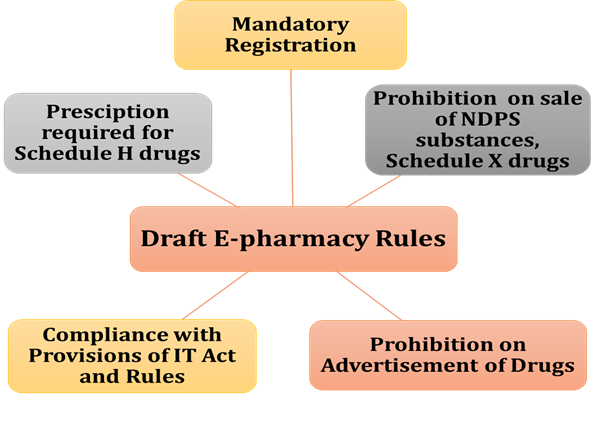Goaltide Daily Current Afffairs 2023
Current Affair 1:
WINDSOR FRAMEWORK
Recently, the UK government reached a landmark deal with the European Union (EU) on post- Brexit trade rules that will govern Northern Ireland.

- British and EU rules.
- The deal will protect the flow of free trade between Great Britain and Northern Ireland by creating green and red lanes for goods flowing into Northern Ireland.
- Goods that might end up entering the Republic of Ireland will be placed in the red lane for checks before entering Northern Ireland.
- Goods destined to remain in Northern Ireland will flow freely.
- Through the deal the UK and the EU have managed to protect “Northern Ireland’s place in the union” by allowing the UK government to determine VAT rates applicable in Northern Ireland, as opposed to the current system where the rates are determined by the EU.
- This would allow recent policies, such as the reform to lower the price of pints in British pubs, to now apply in Northern Ireland.
- A new “Stormont brake” that would allow Northern Ireland’s devolved government to pull an “emergency brake on any new EU laws from being imposed on the province.
- This will establish a clear process through which the democratically elected assembly can pull an emergency brake for changes to EU goods, rules that would have significant and lasting effect on everyday lives.
- If the brake is pulled by the Northern Irish government, the Westminster government will be given a veto over the law.
Current Affair 2:
SOCIAL STOCK EXCHANGE
Recently, the National Stock Exchange of India received the final approval from the Securities and Exchange Board of India (SEBI) to set up a Social Stock Exchange (SSE).
- The SSE would function as a separate segment within the existing stock exchange and help social enterprises raise funds from the public through its mechanism.
- It would serve as a medium for enterprises to seek finance for their social initiatives, acquire visibility and provide increased transparency about fund mobilisation and utilisation.
- Retail investors can only invest in securities offered by for-profit social enterprises (SEs) under the Main Board.
- In all other cases, only institutional investors and non-institutional investors can invest in securities issued by SEs.
- Any non-profit organisation (NPO) or for-profit social enterprise (FPSEs) that establishes the primacy of social intent would be recognised as a SE, which will make it eligible to be registered or listed on the SSE.
- 17 plausible criteria under SEBI’s ICDR Regulations, 2018 include serving to eradicate hunger, poverty, malnutrition, promoting education, employability, equality, and environmental sustainability among others .NPOs can raise money either through issuance of Zero Coupon Zero Principal (ZCZP) Instruments from private placement or public issue, or donations from mutual funds.
- ZCZP bonds differ from conventional bonds in the sense that it entails zero coupon and no principal payment at maturity.
- For ZCZP issuance, the minimum issue size is presently prescribed as Rs 1 crore and minimum application size for subscription at Rs 2 lakhs.
- Also, Development Impact Bonds are available upon completion of a project and delivered on pre-agreed social metrics at pre-agreed costs/rates.
- For-Profit Enterprises (FPEs) need not register with social stock exchanges before it raises funds through SSE.
- However, it must comply with all provisions of the ICDR Regulations when raising through the SSE.
- It can raise money through issue of equity shares (on main board, SME platform or innovators growth platform of the stock exchange) or issuing equity shares to an Alternative Investment Fund including Social Impact Fund or issue of debt instruments.
- WHAT IS SEBI ?
- SEBI is a Statutory Body (a Non-Constitutional body which is set up by a Parliament) established on 12th April, 1992 in accordance with the provisions of the Securities and Exchange Board of India Act, 1992.
- The basic functions of SEBI is to protect the interests of investors in securities and to promote and regulate the securities market.
- The headquarters of SEBI is situated in Mumbai. The regional offices of SEBI are located in Ahmedabad , Kolkata, Chennai and Delhi.
Background:
- Before SEBI came into existence, Controller of Capital Issues was the regulatory authority, it derived authority from the Capital Issues (Control) Act, 1947.
- In April, 1988 the SEBI was constituted as the regulator of capital markets in India under a resolution of the Government of India.
- Initially SEBI was a non statutory body without any statutory power.
- It became autonomous and given statutory powers by SEBI Act 1992.
SEBI’S POWER AND FUNCTIONS:
- SEBI is a quasi-legislative and quasi-judicial body which can draft regulations, conduct inquiries, pass rulings and impose penalties.
- It functions to fulfill the requirements of three categories:
- Issuers: By providing a marketplace in which the issuers can increase their finance.
- Investors: By ensuring safety and supply of precise and accurate information.
- Intermediaries: By enabling a competitive professional market for intermediaries.
- By Securities Laws (Amendment) Act, 2014, SEBI is now able to regulate any money pooling scheme worth Rs. 100 cr. or more and attach assets in cases of non-compliance.
- SEBI Chairman has the authority to order "search and seizure operations". SEBI board can also seek information, such as telephone call data records, from any persons or entities in respect to any securities transaction being investigated by it.
- SEBI performs the function of registration and regulation of the working of venture capital funds and collective investment schemes including mutual funds.
- It also works for promoting and regulating self-regulatory organizations and prohibiting fraudulent and unfair trade practices relating to securities markets.

Current Affair 3:
SWAYATT Initiative
Recently, a function was held to commemorate the success of “SWAYATT”, an initiative to promote ‘Start-ups, Women and Youth Advantage Through e-Transactions'(SWAYATT) on Government E-Marketplace (GeM) in New Delhi.
What is SWAYATT Initiative?
- The initiative was launched in February 2019 under Ministry of Commerce and Industry. It brings together the key stakeholders within the Indian entrepreneurial ecosystem to Government e-Marketplace the national procurement portal.
- More than 8.5 lakh Micro and Small Enterprises (MSEs) have been registered on GeM portal who have been able to get business of over Rs. 1.87 lakh crore spread across 68 lakh+ orders.
- More than 1.45 lakh women MSEs have fulfilled 7.32 lakh orders worth 15,922 Crore.
- Approximately 43000 SC/ ST MSEs have delivered 1.35 lakh+ orders worth 2,592 Crore on the GeM portal so far.
- 105 Farmer Producer Organisations (FPOs) can now sell more than 200 Agri products directly to the Government through GeM.
What is Government e- Marketplace
The Government e-Marketplace (GeM) is a one-stop National Public Procurement Portal to facilitate online procurement of common use Goods & Services required by various Government Departments / Organizations / PSUs.
- It was launched in 2016 to bring transparency and efficiency in the government buying process.
- GEM aims to enhance transparency, efficiency and speed in public procurement.
- It is a completely paperless, cashless and system driven e-marketplace that enables procurement of common use goods and services with minimal human interface.
- It provides the tools of e-bidding, reverses e-auction and demand aggregation to facilitate the government users to achieve the best value for their money.
- The purchases through GeM by Government users have been authorized and made mandatory by the Ministry of Finance by adding a new Rule No. 149 in the General Financial Rules, 2017.
- It has been developed by Directorate General of Supplies and Disposals (Ministry of Commerce and Industry) with technical support of National e-governance Division (MEITy)
. 
Current Affair 4:
E- PHARMACY IN INDIA
Recently, the government issued show cause notices to over 20 leading e-pharmacies. This brings into highlight, the subject of online sale of medicines in India and the challenges in regulating them. E-pharmacies are online pharmacies i.e. mainly operate in the digital space. These entities are accessible on the internet and they deliver medications to the customers’ doorstep. These include: Independent outlets with only virtual presence Electronic subsidiaries of hospitals Platforms that cater to pharmas .These entities are one of the developments under the e-commerce boom in India. The pandemic and the subsequent lockdown in 2020 marked a watershed moment for these e-pharmaceuticals. The demand for doorstep delivery of medicines sky-rocketed, with some 8.8 million households using these services during lockdown.
- The growth of e-pharmacy in India has been significant in recent years and is expected to grow at a robust growth rate of 21.28% compound annual growth rate during 2021-2027.
- The main factors driving this growth include increasing internet and smartphone penetration, rising healthcare costs, and a growing demand for convenience and accessibility. The acute need for doorstep delivery of drugs was felt during Covid-19. Nearly 8.8 million households used home delivery services during the lockdown. E-pharmacies call themselves facilitators of doorstep delivery and claim tie-ups with retail chemists for vending medicines.
Impact on Quality of Drugs:
- The sale, stock, offer for sale or distribution of drugs through online, internet or other electronic platforms without a licence have potential impact on quality of drugs and pose risk to public health.
- As there arises a cope of misuse of drugs through self-medication and indiscriminate use of the drugs.
- No Statutory Backing:
- The Drugs and Cosmetics Act, 1940 regulates the import, manufacturing and distribution of drugs in India.However, there is no statutory definition of “e-pharmacy” either under the Drugs and Cosmetics Act, 1940 or the Pharmacy Act, 1948.
- However, the electronic sale of physician-prescribed drugs from online drug store sites is expressed under the IT Act, 2000. The Health Ministry has been using a ‘blow hot blow cold’ approach (i.e. ambiguity) towards e-pharmacies. For instance, the ministry recognized the acute need for these services during the lockdown and ordered the e-pharmacies to continue operations. Then, in a recent meeting, the Health Minister went as far as suggesting that e-pharmacies be closed down. The DCGI (Drugs Controller General of India) banned online sale of medicines for the 1st time in December 2015.
- In 2018, the Health Ministry floated the draft e-pharmacy rules. However, despite being finalized after taking public suggestions into consideration, it wasn’t notified. It was referred to a Group of Ministers for further considerations and eventually, shelved.
- The 172nd Parliamentary Standing Committee report, released in 2022, termed the situation as ‘appalling’ as the rules haven’t been notified even after 4 years. There have been multiple court orders over the years calling for regulation of the e-pharmacies. The High Courts of Bombay, Madras, Delhi and Patna have issued such orders. The draft of New Drugs, Medical Devices, and Cosmetics Bill, 2022 was released by the Health Ministry. It has comprehensive provisions for:Periodic inspections,Complaint redressal,Monitoring, etc.
- In early February, the Health Ministry issued show cause notice to over 20 e-pharmacies for selling medicines online.The CDSCO (Central Drugs Standard Control Organisation), the central drug regulator, alleged that these entities were selling medicines that aren’t allowed for sale without prescription i.e. violation of provisions under the 1940 Drugs and Cosmetics Act.Note that drugs listed in Schedules H, HI, and X can be sold only with a prescription from registered medical practitioners.This move followed threats from AIOCD (All India Organisation of Chemists and Druggists) of a country-wide protest if the government fails to act against illegal online sale of medicines.

Current Affair 5:
GRIEVANCE APPELLATE COMMITTEE PORTAL
- Recently, the Ministry of Electronics and Information Technology launched the Grievance Appellate Committee (GAC) portal.The Grievance Appellate Committee (GAC) is established under the Information Technology (Intermediary Guidelines and Digital Media Ethics Code) Rules, 2021 [“IT Rules”], made under the Information Technology Act, 2000. The IT Rules and GAC aim to ensure a Safe & Trusted and Accountable Internet for Indian users. The GAC is an online dispute resolution mechanism.
- The GAC deals with the appeals of users (Digital Nagriks) aggrieved by decisions of Grievance Officers of social media intermediaries and other intermediaries on complaints of users or victims against violation of the IT Rules and any other matters pertaining to the computer resources made available by the intermediaries.
- The Committee will try to respond to the user’s appeal within 30 days. Within 24 hours of receiving the complaint, this official is required to acknowledge it and offer a resolution within 15 days. It is required that complaints connected to crimes against women be handled within 24 hours in specific situations.
- The objectives of the Grievance Appellate Committee are as under: The primary goal of the Grievance Appellate Committee is to make sure that platforms’ grievance redressal methods are effective and accommodating to users.
- A change to the Information Technology (Intermediary Guidelines and Digital Media Ethics Code) Regulations, 2021 was made in 2022 to force social media businesses to uphold all of the rights guaranteed to individuals by the Constitution, including those outlined in articles 14, 19, and 21.
Three Committees:
- To take complaints and implement these adjustments, three committees were established.
- The first committee, which would handle complaints against unlawful or criminal activity, will be run by the Ministry of Home Affairs.
- The second will deal with false information or material and will fall under the Ministry of Information and Broadcasting.
- MeitY will serve as the chair of the third committee, which will focus on copyright issues and any other illegal activity that is not already addressed elsewhere.

The GAC is a crucial component of the wider framework being constructed, and the new mechanism will encourage platforms to settle disputes on their own. The GAC is a continuation of the government’s goal of developing more and simpler dispute resolution mechanisms.
<< Previous Next >>


